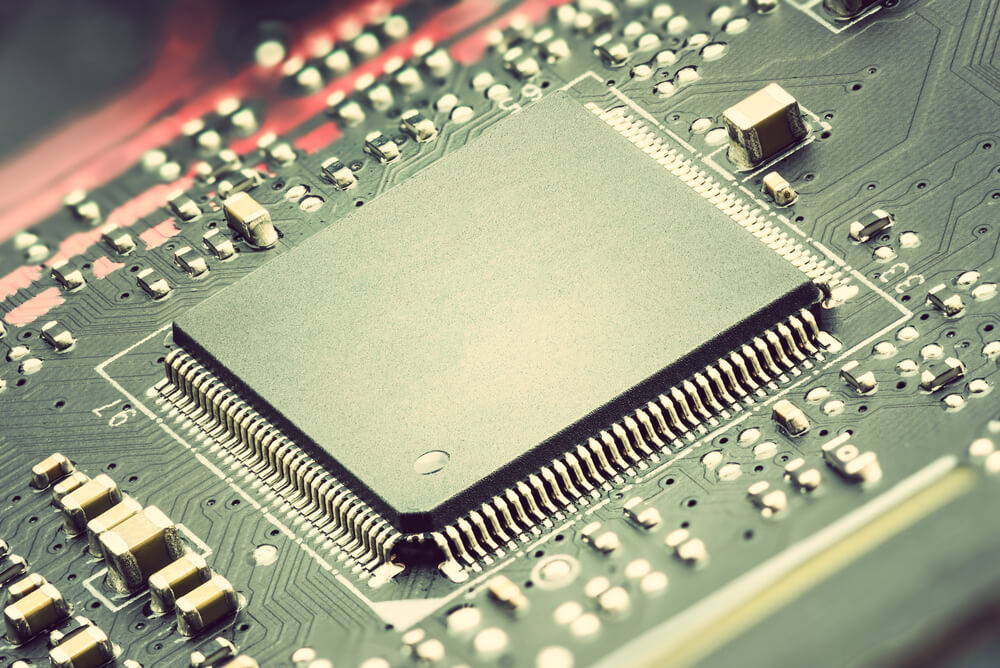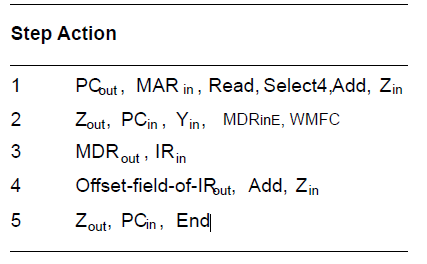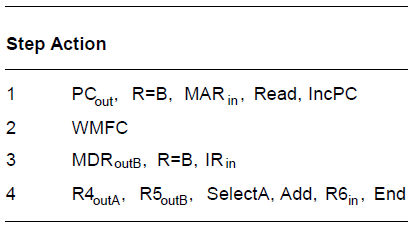Basic Processing Unit
Page Contents

Overview
- Instruction Set Processor (ISP)
- Central Processing Unit (CPU)
- A typical computing task consists of a series of steps specified by a sequence of machine instructions that constitute a program.
- An instruction is executed by carrying out a sequence of more rudimentary operations.
Fundamental Concepts
- The processor fetches one instruction at a time and performs the operation specified.
- Instructions are fetched from successive memory locations until a branch or a jump instruction is encountered.
- The processor keeps track of the address of the memory location containing the next instruction to be fetched using Program Counter (PC).
- Instruction Register (IR)
Executing an Instruction
- Fetch the contents of the memory location pointed to by the PC.
- The contents of this location are loaded into the IR (fetch phase).
- IR ← [[PC]]
- Assuming that the memory is byte addressable, increment the contents of the PC by 4 (fetch phase).
- PC ← [PC] + 4
- Carry out the actions specified by the instruction in the IR (execution phase).
Executing an Instruction
Transfer a word of data from one processor register to another or to the ALU.
Perform an arithmetic or a logic operation and store the result in a processor register.
Fetch the contents of a given memory location and load them into a processor register.
Store a word of data from a processor register into a given memory location.
Register Transfers

All operations and data transfers are controlled by the processor clock
Performing an Arithmetic or Logic Operation
The ALU is a combinational circuit that has no internal storage.
- ALU gets the two operands from MUX and bus. The result is temporarily stored in register Z.
- What is the sequence of operations to add the contents of register R1 to those of R2 and store the result in R3?
- R1out, Yin
- R2out, SelectY, Add, Zin
- Zout, R3in
Fetching a Word from Memory
- Address into MAR; issue Read operation; data into MDR.
- The response time of each memory access varies (cache miss, memory-mapped I/O,…).
- To accommodate this, the processor waits until it receives an indication that the requested operation has been completed (Memory-Function-Completed, MFC).
- Move (R1), R2
- MAR ← [R1]
- Start a Read operation on the memory bus
- Wait for the MFC response from the memory
- Load MDR from
Signals activated
- R1out, MARin, Read
- MDRinE, WMFC
- MDRout, R2in
Basic Processing Unit
Timing of Basic Processing Unit

The figure represents Timing of a memory Read operation.
Assume MAR is always available on the address lines of the memory bus.
Also Read
Data Structures For Language Processing (System Programming/Search Organization/Hash Table/Heap)
Linkers, Loaders and Software
Execution of a Complete Instruction
- Add (R3), R1
- Fetch the instruction
- Fetch the first operand (the contents of the memory location pointed to by R3)
- Perform the addition
- Load the result into R1
Architecture of Basic Processing Unit

Execution of a Complete Instruction
- Add (R3), R1
- M DRinE, WMFC
Control Sequencer execution of the instruction Add (R3),R1.
Execution of Branch Instructions in Basic Processing Unit
- A branch instruction replaces the contents of PC with the branch target address, which is usually obtained by adding an offset X given in the branch instruction.
- The offset X is usually the difference between the branch target address and the address immediately following the branch instruction.
- Conditional branch

Multiple-Bus Organization
- Add R4, R5, R6

Also read





